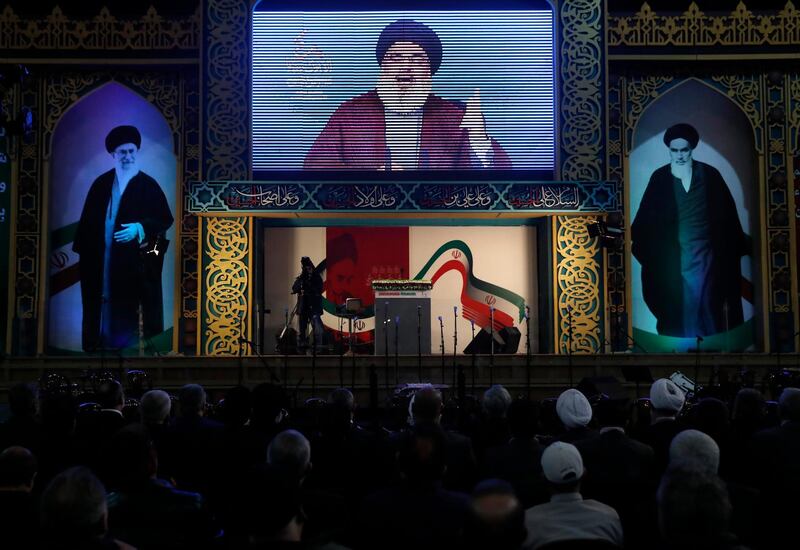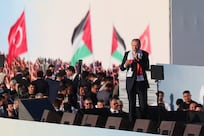The Syrian war effectively eradicated the once-widespread myth that there was an "axis of resistance" in the Middle East, uniting Sunni Islamists like the Muslim Brotherhood with pro-Iranian sectarian Shia forces. The false narrative suggested that, by threatening the regional order, the culture of "resistance" was battling a supposed "culture of accommodation" by Arab states, which, in seeking to maintain stability, were supposedly serving the interests of the West and Israel.
But with the Syrian war now over, efforts to resuscitate this myth are being thwarted by the rise of Turkey, which has drawn Sunni Islamists into a unified camp of its own.
After rebel-held parts of Aleppo fell to pro-regime forces in December 2016, Turkey shifted its strategy away from a concerted confrontation with Iran and its proxies and began a determined bid for broader regional, ideological and political hegemony.
In the decade before the Syrian war began in 2011, both Sunni and Shia Islamist, as well as pan-Arab nationalist, populist rhetoric, depicted the region as divided into two camps: an "axis of resistance" confronting an "axis of accommodation".
This mythology created the illusion of a "resistance" alliance, which, with rare exceptions, never really existed, and a supposed consensus, which never existed at all, between two largely incompatible groupings.
The pro-Iranian camp in the Middle East – including the Syrian regime, Hezbollah and other Lebanese factions, Iraqi Shia militias and others directly aligned with Tehran – trumpeted the mythology of resistance, with Hezbollah as the implicit vanguard of the movement.
The Sunni Islamist camp – passionately supported by culturally influential but politically insignificant left-wing pan-Arab nationalists, among them prominent voices on Al Jazeera TV – repeated virtually the same mythology but with Hamas at the forefront.
Although they had fundamentally differing agendas, their regional discourse was generally, but not entirely, indistinguishable, and certainly complementary and mutually reinforcing.
While it was never fully fleshed out, this resistance was assumed to be wholeheartedly against Israel, largely against the US and generally against the status quo and most existing Arab regimes.
However, this putative alliance did not survive the war in Syria.
The stark division the Syrian war appeared to force on most regional actors appeared to neatly divide them into relatively homogenous pro and anti-Iranian camps. Turkey, for example, was understood to be in the anti-Iranian grouping.
It was also primarily responsible for the illusion that regional dynamics were primarily driven by a sectarian Sunni-Shia divide, which some commentators even asserted was an age-old phenomenon.
The best example of the kind of dislocating rupture caused by the demolition of the axis of resistance myth is Hamas, which was no longer able to remain both a core member of the Muslim Brotherhood movement and a key ally of Iran.
The Syrian war forced Hamas to choose between its Sunni Islamist identity and its alliance with Syria and Iran. Its leadership fled Damascus for Doha, abandoning their headquarters and many assets.
Now the Syrian war is effectively over, there are obvious efforts to resurrect the false idea of an alliance between Sunni and Shia Islamists, plus left-wing cheerleaders, under the banner of "resistance". Hence, Hamas is cautiously reaching out to Iran again. Media outlets are dropping some old hostilities and softening tones. Attitudes are shifting and many self-styled activists are no doubt hoping to resurrect the idea of resistance versus accommodation.
But that's not going to happen. Shia and Sunni Islamists, and even their pan-Arab nationalist fan clubs, aren't going to be able to resurrect the fictional and virtual axis they believed defined the region 15 years ago.
The factor that makes this impossible is the rise of Turkey as a fully fledged would-be regional hegemon with a fully defined Sunni Islamist ideological orientation and a set of reliable allies and proxies, most notably Qatar and Muslim Brotherhood groups.
Fifteen years ago, Iran wasn’t competing with a major anti-status quo rival. Now it is.
Even if these formerly aligned groups once again use similar language, there are two distinctly different agendas and contending foreign policies reflecting powerful, competing regional states at work.
The Middle East is no longer a binary landscape, divided between resistance versus accommodation (or radical versus moderate, if you prefer), or even pro and anti-Iran blocs.
Writ large, it is now a ternary reality: a pro-Iranian bloc with a largely Shia Islamist orientation; a pro-Turkish and essentially Sunni Islamist one; and the camp favouring stability and the regional status quo largely aligned with Washington.
Turkey and Iran now are frenemies – rivals that will cautiously confront when necessary, co-operate when possible and compete always, while being careful to continue hundreds of years of care to avoid any direct conflict.
But it has become obvious that, just as Tehran's foreign policy was, ultimately, the guiding light behind the pro-Iranian and sectarian Shia wing of the axis of resistance, what used to be its Sunni Islamist components are now operating just as firmly under the direction and for the interests of Ankara and its agenda.
The outbreak of the Syrian war might have put paid to the myth of the axis of resistance. But the end of that conflict isn't going to allow for its resurrection.





